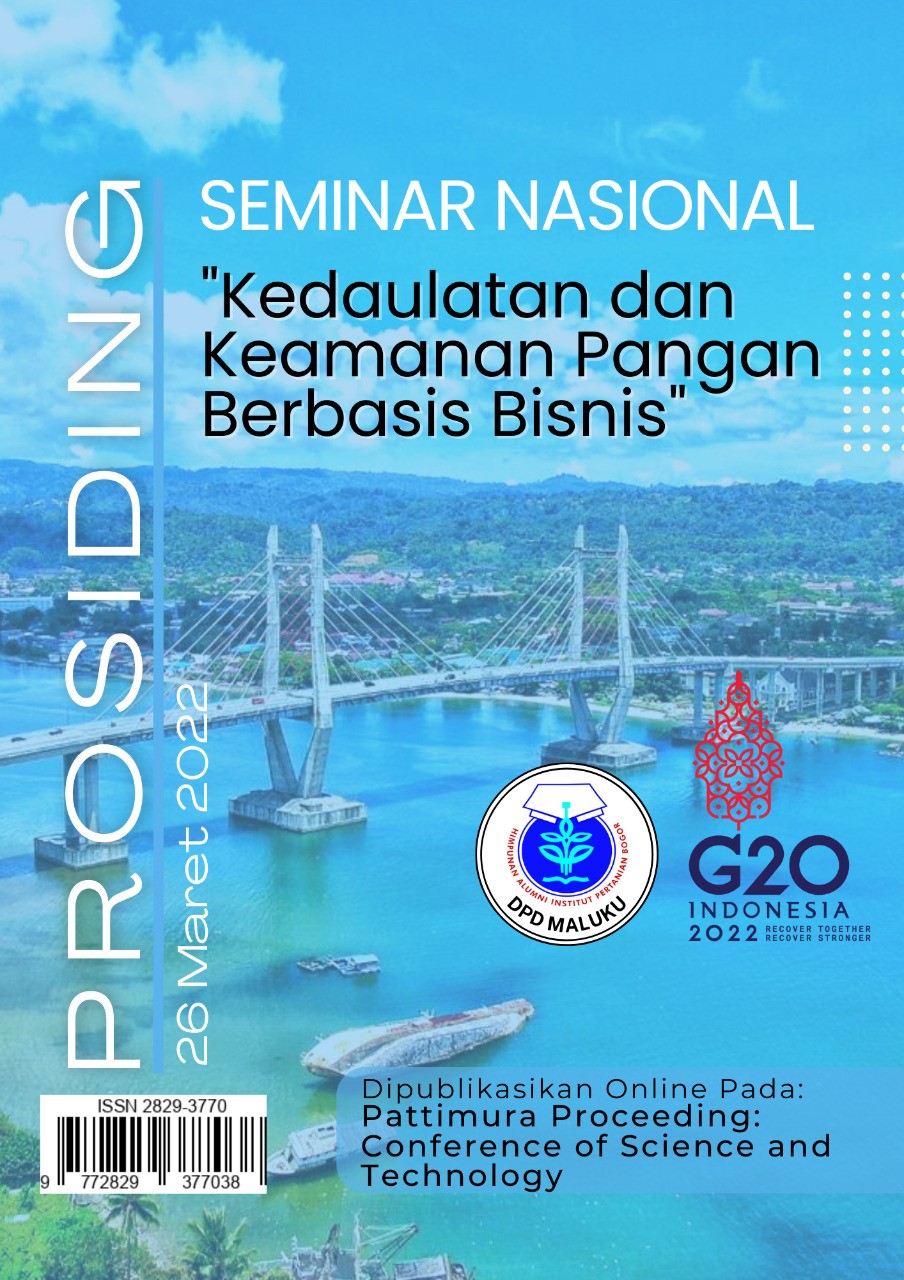KAJIAN KARAKTERISTIK MORFOLOGI PISANG TONGKA LANGIT DI KOTA AMBON PROVINSI MALUKU
Study of Morphology Characteristics of Tongka Langit Banana in Ambon City, Maluku Province
Abstract
Indonesia has a lot of germplasm diversity, one of which is the banana plant. Tongka Langit banana plant (Musa troglodytarum L.) is a type of banana endemic to eastern Indonesia, namely Maluku and Papua, which is quite unique. Morphological characterization is an approach used to identify a plant. In banana plants, characterization was carried out in the vegetative and generative phases which included the characters of leaves, stems, flowers and fruit. The method used in this research is a survey and direct observation at the research site. Based on the results of observations, it can be concluded that there is variation in the leaf character, while the flower and fruit characters for the two research locations show no variation
Downloads
References
Englberger, L., Aalbersberg, W., Ravi, P., Bonnin, E., Marks, G. C., Fitzgerald, M. H., & Elymore, J. (2003). Further analyses on Micronesian banana, taro, breadfruit and other foods for provitamin A carotenoids and minerals. J. Food Comp Anal, 16, 219–236.
Karuppiah, P., & Mustaffa, M. (2013). Antibacterial and antioxidant activities of Musa sp. leaf extracts against multidrug resistant clinical pathogens causing nosocomial infection. Asian Pacific Journal of Tropical Biomedicine 3(9), 737–742.
Leu, T. M., Ho R., Wong, M., Soulet, S., & Teai, T. (2015). Volatile composition of raw and oven-cooked pulp of the fē’i banana (Musa troglodytarum L.) fruits from French Polynesia. Journal of Essential Oil Research, doi: 10.1080/10412905.2015.1012598.
Marasabessy, D. A., & Taihuttu, H. N. (2016). Identification of Characteritation of Banana Tongka Langit (Musa troglodytarum L.) Plantation in Tulehu Village Central Molluccas Regency. Poster. Dipresentasikan Pada Internasional Agroforestry Seminar. Ambon.
Ovando, M. M., Sayago, A. S., Agama, A. E., Goni I, & Bello, P. L. A. (2009). Unripe banana flour as an ingredient to increase the undigestible carbohydrates of pasta. J Food Chem 113, 121–126.
Rodriges-Amaya, B. D. 2016. Food Carotenoids Chemistry, Biology, and Technology. IFT Press.
Samson, E., Rondonuwu, F. S., & Semangun, H. (2013). Analysis of Carotenoid Content of Crude Extract of Tongkat Langit Banana Fruit (Musa troglodytarum) Using Nir Spectroscopy (Near Infrared). Traditional Medicine Journal 18(1), 17–21.
Simangunsong, D. A., Respatijarti & Damanhuri. (2017). Eksplorasi dan Karakterisasi Pisang Mas (Musa spp) Di Kabupaten Nganjuk, Mojokerto, Lumajang Dan Kediri. Jurnal Produksi Tanaman, 5(3), 363–367.
Tuhumury, H. C. D., Moniharapon, E., & Souripet, A. (2018). Karakteristik Sensoris Puree Pisang Tongka Langit Pendek (Musa troglodytarum). Jurnal Teknologi Pertanian, 9(2), 1–10.
Wang, H., Xiaokaiti, M., Zhou, Y., Yang, Y., Liu, Y., & Zhao, R. (2012). Mega-Events and City Branding: A Case Study of Shanghai World Expo 2010. Journal of US-China Public Administration, 9(11), 1283–1293.
Watkaat, M. & Latuconsina, M. (2005). Pengenalan Beberapa Plasma Nutfah Buah-Buahan Maluku. Balai Pengkajian Teknologi Pertanian (BPTP) Maluku. Maluku.
Copyright (c) 2022 Pattimura Proceeding: Conference of Science and Technology

This work is licensed under a Creative Commons Attribution-NonCommercial-ShareAlike 4.0 International License.












